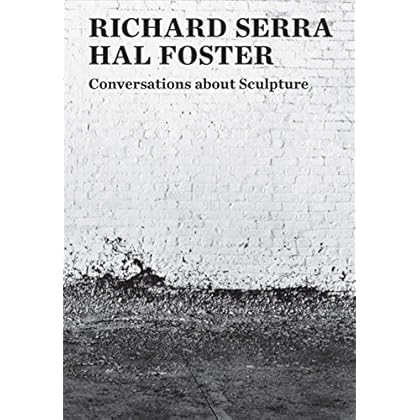Conversations about Sculpture
Category: Books,Arts & Photography,Individual Artists
Conversations about Sculpture Details
Review “Illuminating”—Hrag Vartanian, Hyperallergic“The pulse and challenge of the exchange carries from beginning to end, and the narrative of Serra’s practice that emerges is irresistible.”–Jeffrey Weiss, independent curator and critic Read more Book Description Featuring lively and probing conversations between the sculptor Richard Serra and the acclaimed art historian Hal Foster, this volume offers new insight into Serra’s oeuvre, influences, and working practices. Read more About the Author Richard Serra is an internationally renowned artist, best known for steel sculptures that engage audiences through material, form, structure, and site specificity. He has exhibited widely since his first solo exhibition in 1966 and has work publicly sited in Amsterdam, London, San Francisco, Bilbao, Berlin, Qatar, and elsewhere. Serra has been awarded the title of Chevalier de l’Ordre national de la Legion d’honneur and the J. Paul Getty Medal, among many other honors. Hal Foster is Townsend Martin, Class of 1917, Professor of Art and Archaeology at Princeton University. An award-winning author, his publications include Bad New Days, The Art-Architecture Complex, and The Return of the Real. Read more

Reviews
Serra traces his development as a sculptor, early conceptual artist in these interviews. I guess the free play of "happenings" in New York City was the buzz then, the early 1960s, so Serra's early work often took a performative means, of spreading like a janitor, liquid lead against the walls in his studio, or rubber configurations,thrown into the space of Being, as Heidegger might imply.... all quite geometric shapes, squares, columns, rectangles.He sites his influences as Brancusi and Giacometti,where he often visited their studio in his Paris student days..... I would also think to some degree David Smith was an influence.It was not till Serra found metal plates was his fate sealed.He simply stacked four plates like a stack of cards, lean them together letting gravity do all the work. He knew the steel mills blast furnace procedures quite well having worked there before pursuing an art career. This development only grew larger with his ongoing dialogue" conversations", meditations with the surroundings of where his work was exhibited This was much of the time outdoors, in abandoned places or quite well known plazas, as his''' tilted arc'''' New York City that was sadly takened out of commission. I find his indoor works quite limiting, too contained and compromised, and they loose that primitive spiritual quality indoors. But that is the magnetic market force within the art world, It must be indoors to sell it.Later in life he found new forms for his enormous pieces, as the "torqued" series from the early 2000sHe often sketched this with paper models, or wood models.To suggest that Serra's artistic "ontology" was some kind of fundamentalist is useful, as many artisst became as Barnett Newman and Mark Rothko, I suppose Andy Warhol as well, in his own way was a''' fundamentalist''' of pop-art never straying from his appointed rounds of pop-icons, Marilyn Monroe, Elvis and Mao...,and not encumbering his work with deep existential meanings, substances as say,Pollock,de Kooning,then Cy Twombly,or Rauschenberg or Jasper Johns desired.The latter did lighten up the script, with pop-art materials again in hybrid procedures.. Their art was more performative multi-media, whereas Newman, Rothko, Warhol and Serra stuck to defined predictable forms.With Serra we learn the meaning(s) emerge from where the sculpture is placed, where it inhabits itself, the space is the other"enormous half of the work which is nurturing it, nourishing it with meanings and paradox.


